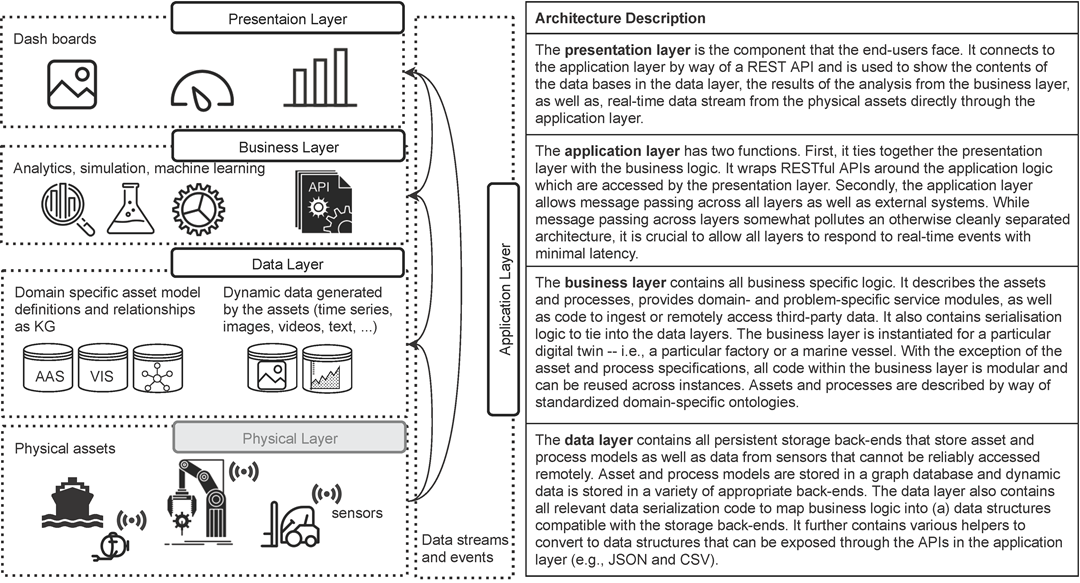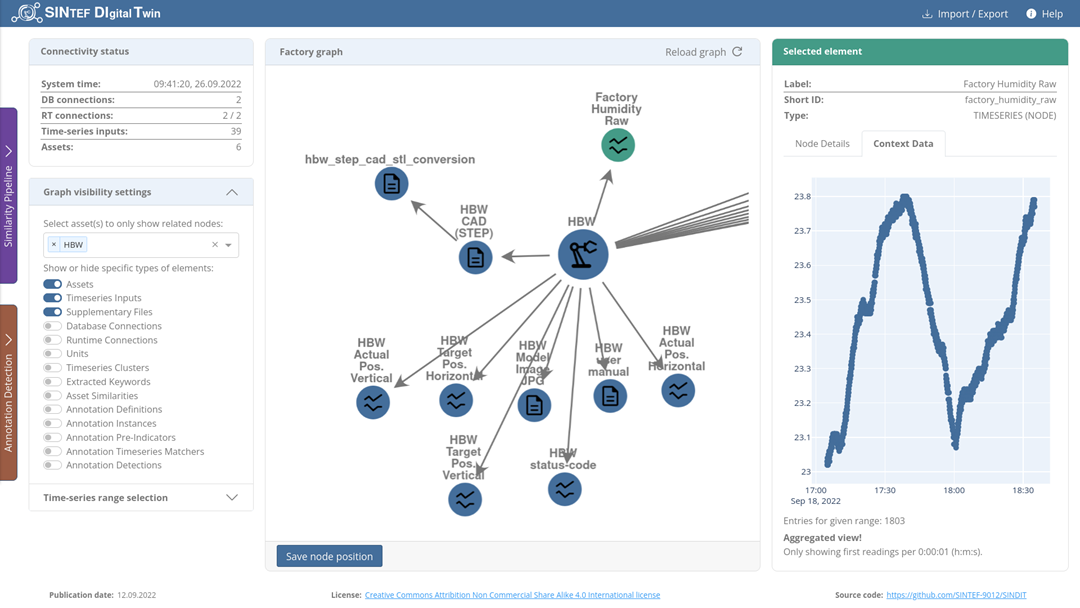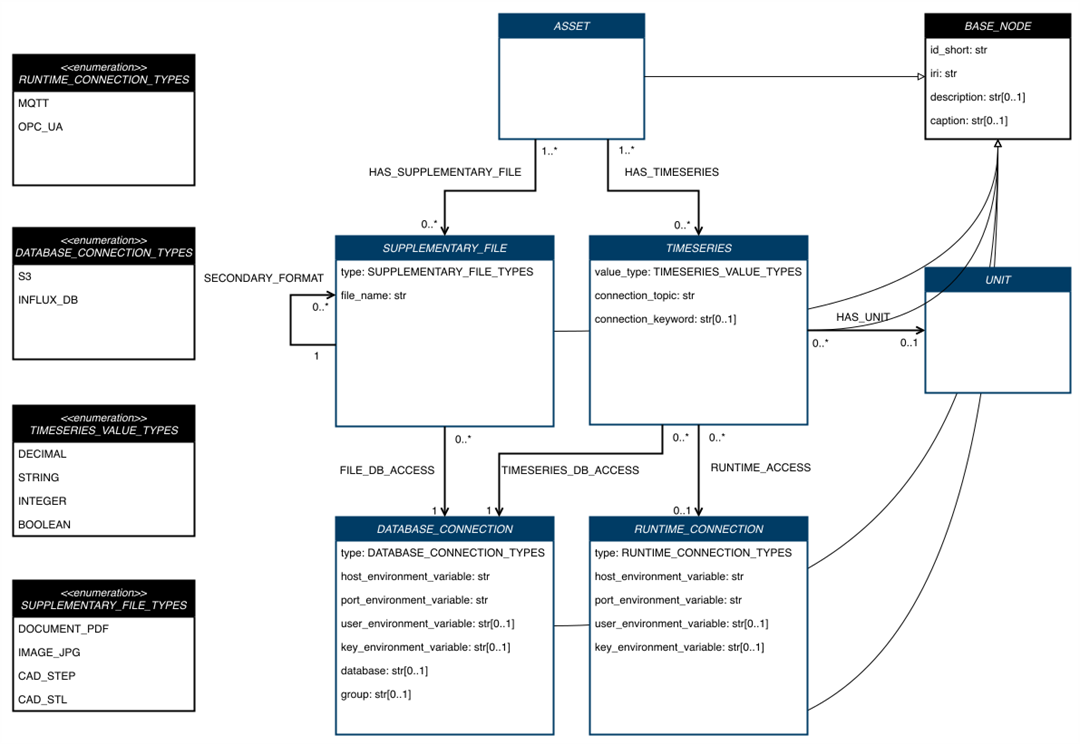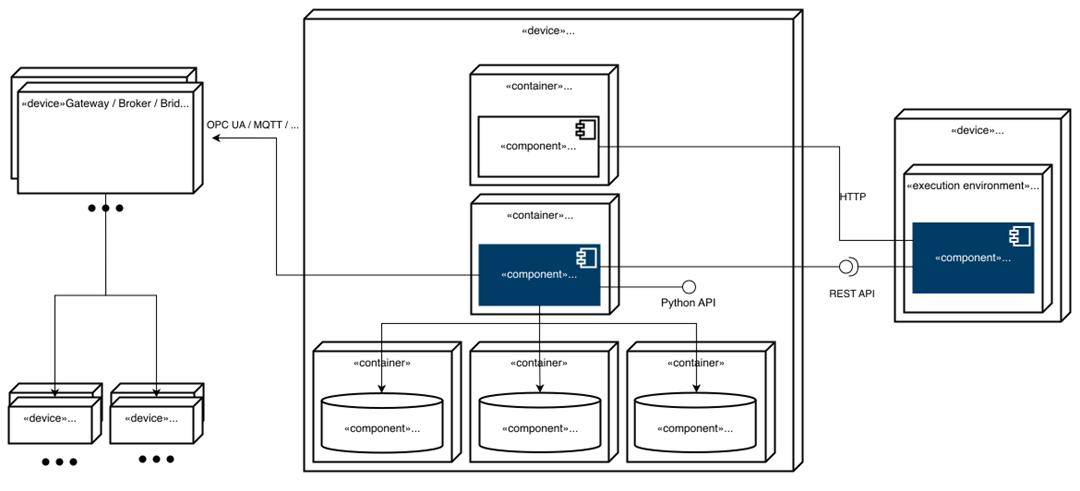SINDIT covers aspects related to Digital Twin data representation (graph-based data structures for assets data and processes), data storage (assets and time-series data), and support for discrete/continuous simulation (e.g., estimation of production capacity).
The purpose of the framework is to provide the mechanisms to represent and store data in a way that can capture assets and time-series data, while at the same time can offer efficient access to the data and ability to use the stored data for various types of simulations (discrete/flow).
The framework is meant to help factories IT personnel in the process of representing assets and processes within factories and storing data about them, and combining the information with real-time sensor data, to facilitate analytics tasks such as simulations.
Figure 1 provides illustration of the four-layer software architecture of SINDIT along with various technologies deployed in the stack. The data layer contains all persistent storage back-ends – both those managed by SINDIT as well as those managed by third parties. The business layer contains (i) descriptions of machines and processes, (ii) services for event detection and capacity estimation, and (iii) ingestion of and federated access to relevant data sources. The application layer exposes the relevant outputs of the business logic. These can be consumed either by SINDIT’s own presentation layer or by authorized third parties. The physical assets comprise the physical layer which is not discussed here.

Figure 1: SINDIT Software Architecture [1]
Example of usage
An instance of SINDIT is running at https://sindit.sintef.cloud/ where the Digital Twin of the Fischertechnik Training Factory Industry 4.0 is represented with Knowledge Graph and visualized with SINDIT dashboard. SINDIT is used a universal Digital Twin platform, that holds all relevant information about the assets from the factory and is synchronized in real-time to the physical assets. It collects both static information like documents, as well as dynamic time-series data.

Figure 2: SINDIT Dashboard showing different components of the Fischertechnik factory.
To make the architecture of SINDIT be applicable to various domains and factories, a very generic meta-model (shown in Figure 3) has been created.

Figure 3: Generic Information Model employed in SINDIT
Interfaces
The diagram in Figure 4 provides an overview over the deployment architecture of SINDIT. A REST-API is provided by the digital-twin service and is utilized by the dashboard-frontend. For specific data like time series or documents, specialized databases have been integrated. Connectors to commonly used messaging protocols like OPC UA and MQTT serve the real-time aspects of the digital twin.

Figure 4: Composite Structure Diagram representing different compnents of SINDIT
Subordinates and platform dependencies
The prototype was implemented on a Python-based stack and 3rd party databases were used (e.g., InfluxDB for timeseries data, Neo4j for graph data, RDFox for Semantic Knowledge Graph, etc.).
License
SINDIT is provided as an open-source software availalbe at SINDIT GitHub Repository under MIT License.
TRL
TRL4 – a protype based on a Python stack is implemented at this stage and validated in lab setting.

